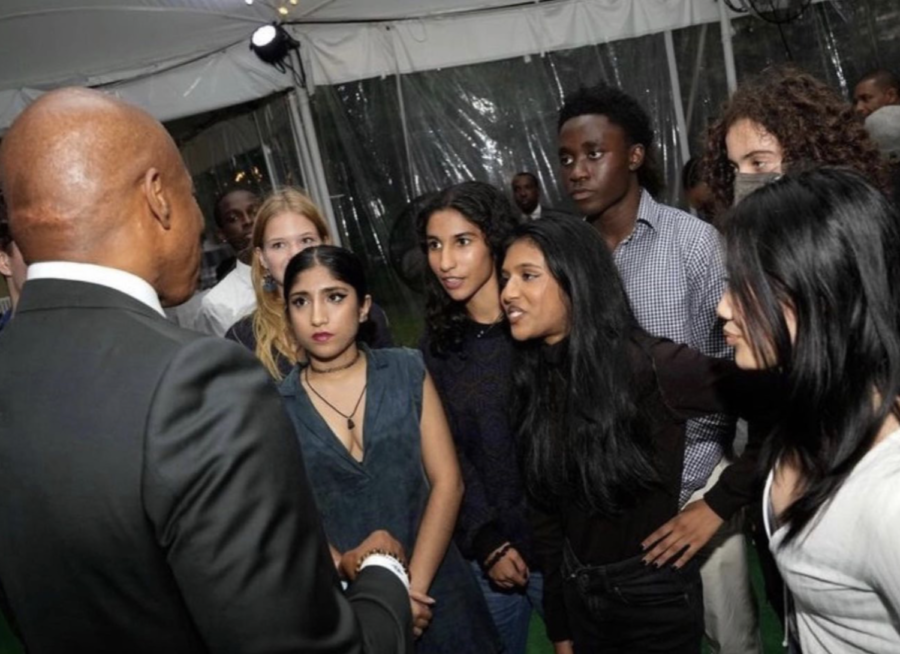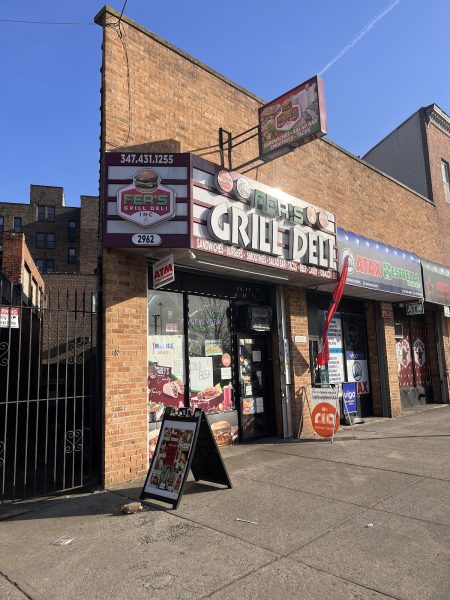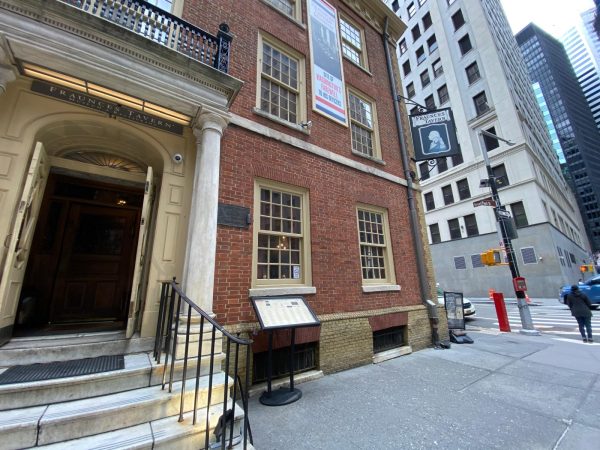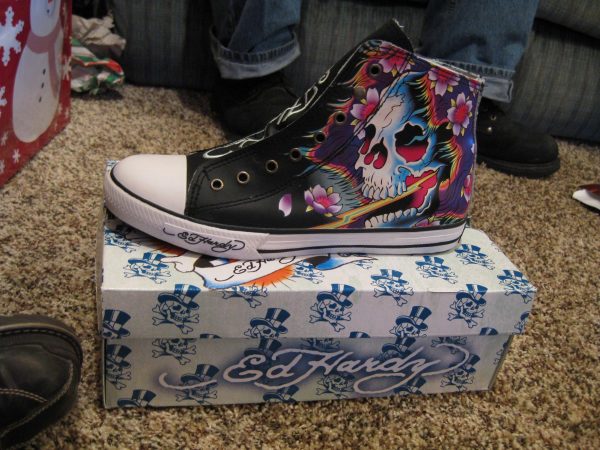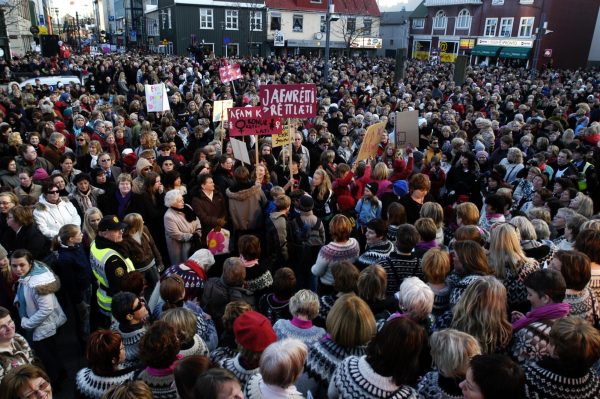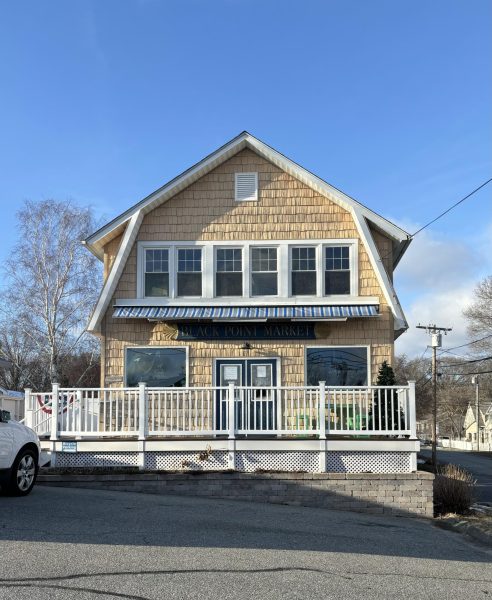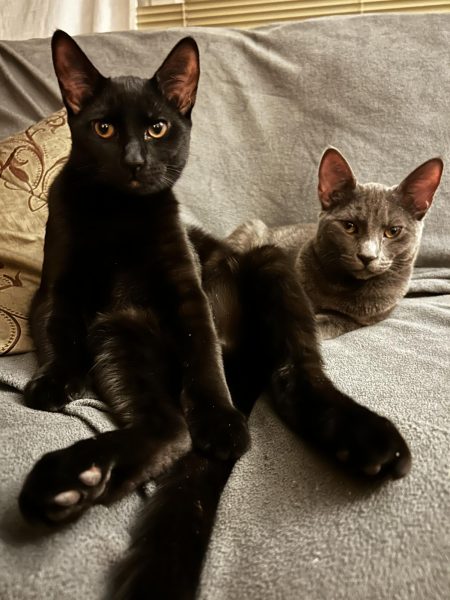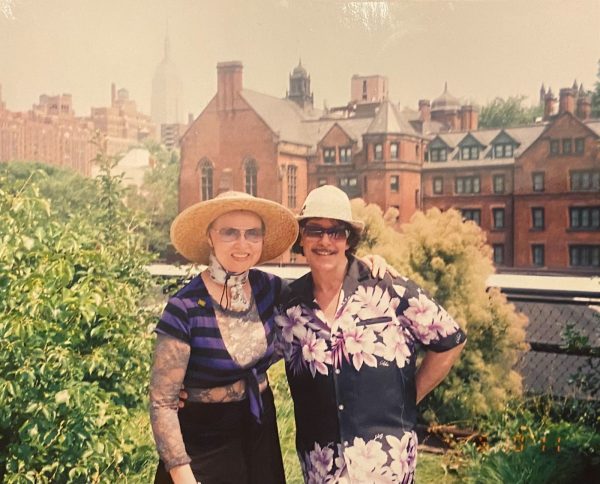What’s the Deal With Zero Waste Schools?
A profile on the Bronx Science student-run organization Zero Waste Schools, renowned at Bronx Science for their dialogue with Mayor Eric Adams and acquisition of a twenty thousand dollar check as a donation for Centralized Recycling Systems at Bronx Science.
Zero Waste Schools representatives meet with New York City Mayor Eric Adams at his home, Gracie Mansion. “In every event we have attended, we have been the youngest people in the room, but our voices are heard,” said Moreen Massillon ’24.
It was October of 2022, and seemingly from nowhere, Zero Waste Schools was the topic on every Bronx Science student’s lips. The commotion began with an Instagram post that captured a dialogue between the organization (ZWS) and New York City Mayor Eric Adams at his famed home, Gracie Mansion. Mystery about the group only swelled a few weeks later when a twenty thousand dollar check was (correctly) rumored to be at their disposal, a donation that was used to purchase Centralized Recycling Systems for Bronx Science. All were wondering, ‘What is the deal with Zero Waste Schools?‘
Zero Waste Schools is more generally understood to be a Department of Education, Department of Sanitation (DSNY), and GrowNYC program that focuses on perfecting waste management in New York City public schools. A large portion of their goal includes the promotion of recycling and composting through waste-specific bins, which are typically implemented in groups of four. One bin is designated for recycling paper, another for recycling hard plastics, glass, and metals, another for composting organic materials, and finally, one bin is for the rest of disposed items that cannot be reused — trash. The methods in which paper, mixed recycling, and organic compost are reused are each inherently different, whereby the benefit of separated waste is that it discourages the contamination of unlike materials (imagine glass shards mixed in with a ream of paper) which renders the whole batch unusable and only suited for a landfill. The four-channeled bins described are formally referred to as Centralized Recycling Systems (CRS), and because they are known to reduce waste by up to 95%, they have become the pinnacle of waste management campaigns.
Kathleen Corradi (today we know her as ‘rat czar’) developed Zero Waste Schools, the city-wide program, in 2010, and over 500 schools are currently enrolled.
Ironically, this Zero Waste Schools program differs from the Zero Waste Schools organization going viral at Bronx Science. The Bronx Science version, commonly mistaken as merely a school club, is independently registered under New York State and the IRS as an environmental conservation non-profit. President of the organization, Heeta Thakkar ’24, put the difference like this: “So ZWS (us) and ZWS (city) are pretty similar initiatives, but the difference is that the city one is government funded and backed, and they work solely to make schools go zero waste. We do a little more. We lobby and work with the state government to push for environmentally friendly legislation, we had a support drive for Puerto Rico, we donate to New York City’s homeless population, and so on and so forth. I like to think that we’re an organization that just works to better our community, with a focus on helping our environment.”
Zero Waste Schools at Bronx Science was founded in the midst of a blazing summer day in Central Park. Thakkar had been working for a local state senator at the time, and while researching environment-related policies a realization had dawned on her — she was living in the most wasteful city in the world. She knew that New York City policies had to change, she knew that general attitudes around waste management had to change, and what’s more, she knew that all systemic change starts locally. For this reason Thakkar called upon her friends Moreen Massillon ’24 and Leslie Sampaney ’23 to meet her in the park, and inaugurate an organization centered around her long-standing passion for environmental conservation.
“I remember her saying that she wanted to make a tangible difference, but that she had no one to begin the journey with,” Massillon, the organization’s Vice President, recalled. She and Sampaney immediately expressed their eagerness to corroborate with Thakkar’s vision, and the three of them promptly went to work. This meant researching a successful CRS bin-implementation program at State University of New York College of Environmental Science and Forestry (SUNY ESF), as well as studying the Bronx Science floor plan so that they could implement a CRS bin plan at our school.
Upon leaving the park, Massillon said, “I felt very excited and optimistic about the future of the organization. I was very ready to take the initiative and do what we needed to get the ball rolling.”
And get the ball rolling they did. In fact, the ZWS’s ability to generate enthusiasm around conservation is amongst the most prominent contributors to their success. Much of this is owed to how ZWS meetings are run. Students, despite their leadership rank or conservation experience, form a circle with their chairs. Whether spitballing the contents of a prospective legislation or finalizing a presentation for a government official, every student feels comfortable participating and confident in their ability to make a difference.
Lea Woodruff ’24 – who is Organizations and Communication Chairperson – for example, was interested in developing a food waste program and thought DSNY should be involved. She had no problem sending them an e-mail. “We just reached out to them,” she said nonchalantly. Members of ZWS take full advantage of their reputation as Bronx Science students at a school renowned the world over. This, coupled with their professionalism and sheer passion for conservation, secures plenty of engagement in the organization’s ideas from top city officials – the mayor included.
President Thakkar embodies said networking proficiency particularly well. She described her process for getting in touch with Mayor Adams as such: “My dad heads the AIA, Association of Indians in America. He was hosting his annual Diwali festival, and the mayor was invited. And speaking to the mayor, I was like, I’m doing this. What are you doing for the environment? Like what legislation? What are you doing within the city? He was like, I don’t have time for this, but I like you. So, he gave me his number and went away.”
From there, Mayor Adams put ZWS in contact with the leader of the organization Young Future Leaders, who then invited the organization to a town hall meeting where they met the chancellor of the New York City Schools, David C. Banks. Through these connections, ZWS was able to meet with school officials to work on finalizing and executing their SUNY ESF-inspired, CRS project.
Concerning this project, ZWS has ordered a total of 23 units, costing nearly 20 thousand dollars. In order to pay for this initiative, they needed donors. Fatefully, Thakkar’s father knew – through his work with the AIA – of a doctor with a fund for youth initiatives, and gave her the doctor’s information. With this lead, ZWS reached out to the doctor and set a date for their pitch, which would be done at his home in Long Island.
“We knew that for the amount of money we were requesting, we needed to present ourselves professionally. We spent countless hours over the course of many days on Zoom calls deliberating tasks, researching, creating a slideshow, perfecting our pitch, and practicing the way we were going to present it all,” Massillon said.
“We were pressed with a lot of questions, and it was a whole process, but at the end of the day, it worked out. We really lucked out finding this doctor, because if it wasn’t for my dad knowing him, I’m not sure if we would have even found an eligible donor,” Thakkar said.
Just like that, the organization’s months of passion and dedication were rewarded with a twenty thousand dollar check as a donation to fund Centralized Recycling Systems for Bronx Science. And even better, they were rewarded with the promise of change.
These CRS bins have been installed at Bronx Science as of May 15th, 2023, and can be found in the cafeteria and throughout the hallways on campus.
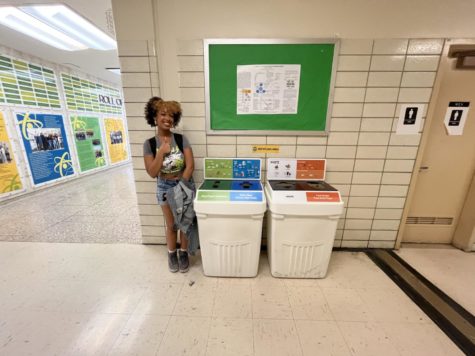
“A lot of people ask me how to get involved with the type of stuff I do, and I never really know how to answer other than telling them to just go for it and do it…Go outside and buy food for someone in need, pick up the trash littered along the sidewalk, participate in what you believe in, fight for what you think is right, voice your thoughts, advocate for what you want to, organize protests, join protests, start an organization; it’s all up to you.” Thakkar said. “I didn’t meet other organizers or people like me until I started doing this stuff myself. It’s a community that you have to bring yourself into, not the other way around.”
In essence, start small. “The first time I paid our taxes was in the Bronx Science gym while watching a volleyball game,” she added.
“We lobby and work with the state government to push for environmentally friendly legislation, we had a support drive for Puerto Rico, we donate to New York City’s homeless population, and so on and so forth. I like to think that we’re an organization that just works to better our community, with a focus on helping our environment,” said President of Zero Waste Schools, Heeta Thakkar ’24.
Yasmine Salha is an Editor-in-Chief for ‘The Science Survey.’ She is a proponent of accessible journalism, and loves to simplify complex and controversial...

